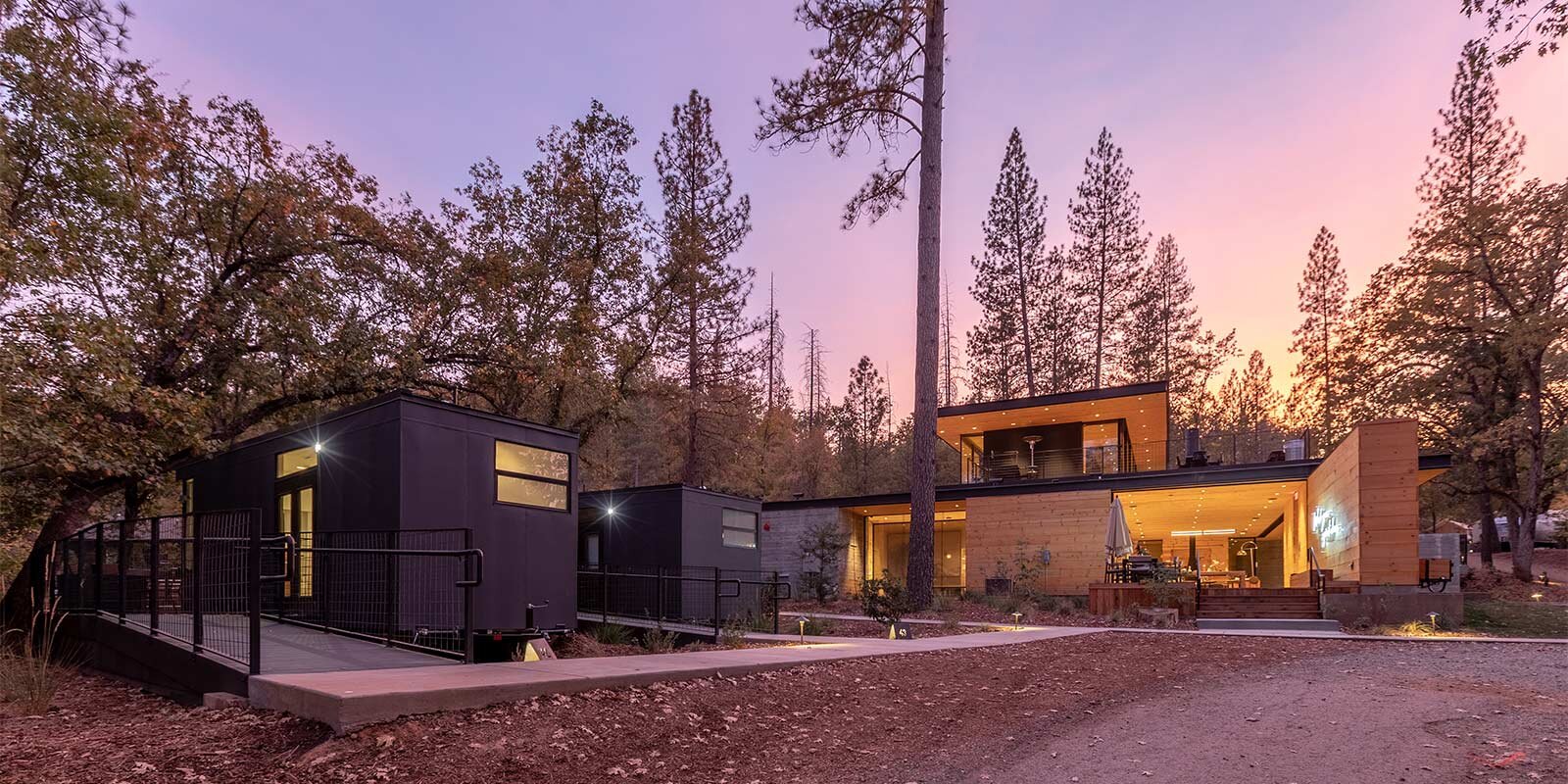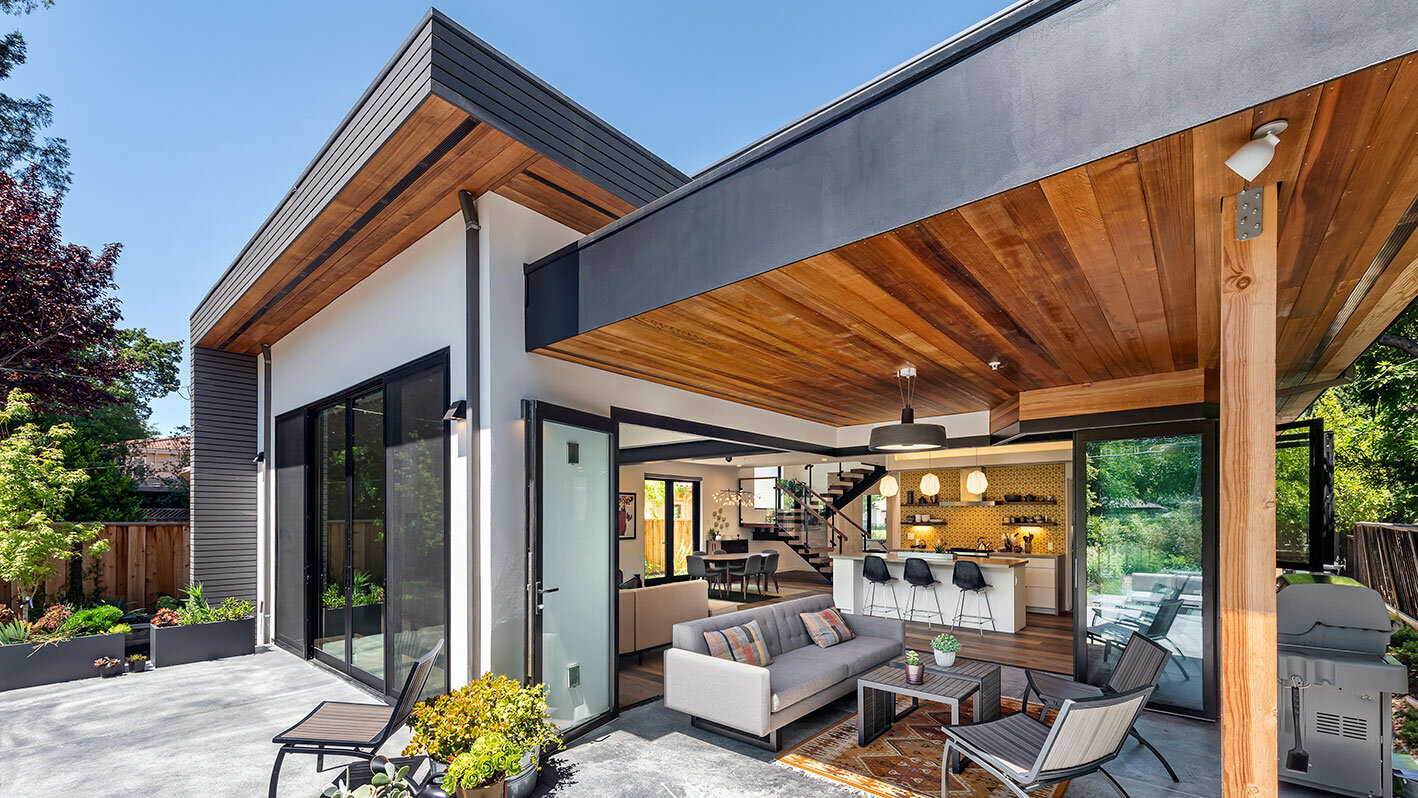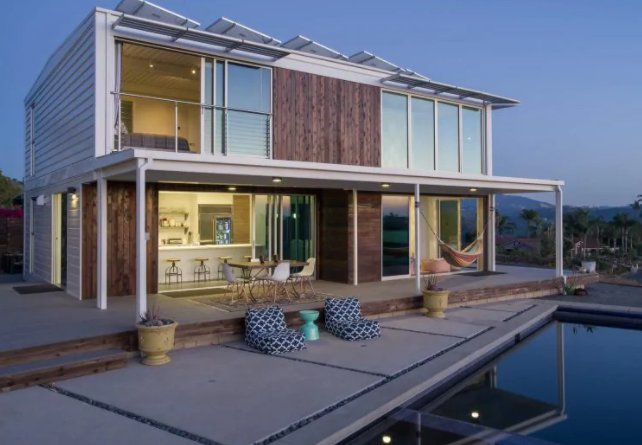Guide to Wildfire Home Rebuilds For the Camp Fire

As the deadliest and most destructive wildfire in California’s history, the Camp Fire of November, 2018 damaged or destroyed over 13,000 residential properties in Butte County, California in the towns of Concow, Paradise, Pulga, and Magalia. In response to such an unfortunate disaster, our Guide to Wildfire Home Rebuilds For the Camp Fire aims to address key questions that homeowners may have while they look to rebuild from the damage caused by the Camp Fire. Below, our guide contains information on financing a home build in California, prefab and modular home companies that are well suited to assist with wildfire rebuilds, and other important information to consider when it comes to rebuilding your home in the wake of the Camp Fire.
Important Questions to Consider
What are the steps to rebuilding after a wildfire?
Debris Removal - removal of fire-damaged items and hazardous materials such as asbestos
Pre-Design Screening - verification of septic system and zoning requirements. The town of Paradise offers a free Pre-Design Screening Service, which can help expedite the issuance of a building permit
Find and choose an architect / builder for your rebuild - towards the end of this page we have included a list of prefab and modular companies that you may want to consider for your rebuild
Customize drawings or a plan for your lot
Apply for a building permit
Plans are reviewed and edited or approved
Construction can begin - during the construction process, a series of inspections must take place to ensure your home is up to California and local building code. Inspections include (but are not limited to): Utilities, Foundation, Framing, Electrical, Plumbing, and Mechanical Components
Once the appropriate inspections and building is complete, your new home is now move-in ready
What steps can I take to reduce my risk in the future?
Create a zone of defensible space around your home
A Lean, Clean, and Green Zone of at least 30 feet must be established around the perimeter of your home. Remove dead and dying plants from this zone of your property. When landscaping consider:
Shorter plants (less than 2 feet) are safer than taller plants
Green, herbaceous plants such as grasses and non-woody flowers are safer than trees and shrubs
If planting single trees, deciduous trees (trees that shed their leaves) are safer than trees such as Palms, Juniper, and Pines
Prune your trees so that limbs are at least 10 feet away from the exterior of your home and prune limbs that are within 6 feet of the ground
Create a Reduced Fuel Zone beyond the Lean, Clean, and Green Zone
The reduced fuel zone should extend an additional 70 feet beyond the Lean, Clean, and Green Zone or to the edge of your property line
This means that your home should have a surrounding zone of at least 100 feet of well-considered, and cared for landscaping
In the reduced fuel zone, you should clear highly flammable materials such as dead trees, logs, twigs, dry leaves, and grasses
Use building materials that provide enhanced protection against wildfires
Roofing - consider using roofing materials with a Class A fire-resistance rating
Walls - exterior walls made of stucco, cement, and block for example are more resistant to timber or vinyl clad exterior walls
Windows - consider using double-pane tempered glass windows which offer higher heat resistance than single-pane windows
Exterior structures - decks, porches, carports, and fences are often highly-vulnerable to wildfires
While not highly-common in residential construction, both internal and external sprinklers have proven effective at minimizing the risk and damage caused by wildfires
While not specifically related to the Camp Fire, it is still important to note that as of January 1, 2020, all new homes built in California must include a solar energy system proportionate to the projected electricity consumption of the home
Where can I find more information?
Financing Your Home Rebuild
Depending on a variety of factors: location, insurance company, policy type, your homeowner’s insurance may provide financial assistance for your home repairs or rebuild following the Camp Fire.
While financial assistance was offered by FEMA on behalf of the federal government, the window for individual assistance has closed.
Individuals looking to borrow money for their home rebuild should consider the following:
You may face a smaller number of financing products for a prefab home compared to a traditional site-built home. This is due to the fact that draw-schedules (when money is made available to the builder) among traditional construction loans often revolves around when on-site construction can start. Because a majority of work in prefabricated homes takes place off-site however, you need to work with a bank that is familiar with this type of construction.There are a number of these in California including:
U.S. Bank
Umpqua
New Century Bank
BBVA
If you match a borrower-profile, you still have access to multiple lenders. Typical loan characteristics include (March, 2020):
Low money down (10% - 20% of the value of your project)
Competitive interest rates
One-time close - payback will be interest-only for the duration of construction and then convert, usually to a 30-year term product after construction is finished (without a second close)
As the market for construction loans is often made up of regional operators, we encourage you to check out our Guide to Prefab and Modular Mortgage Lenders in California
Prefab Home Companies Well-Suited for your Wildfire Rebuild
Along with their design partner, Living Homes, they have reduced rates and free services for individuals whose homes were affected by the 2018 wildfires
They are offering: free initial site analysis, 50% off their feasibility service, $5,000 in free upgrades, and 5% off in design and administration fees
Depending on the model, buyers can be moved in 4-8 months from the purchase date, or 12 months for a custom design
Offers 11 models of homes featuring fire-resistant building materials with typical costs ranging from $300 - $400 per sqft
Example of work: LivingHome 4
Offers free site visit and reduced design fee for individuals whose homes were affected by the California fires
Depending on the location and model, homes can be move-in ready as fast as 9-14 months
Homes feature fire resistant design features such as highly durable roofing, non-combustible exterior sheathing, eave-free designs, and an fire sprinkler system
Has 13 models of homes, ranging in cost from $250 - $400 per sqft
Example of work: Connect 7
Offers a fast-track rebuilding program. Homeowners can choose one of 6 pre designed models for construction - choosing this option can reduce typical construction times by up to 6 months
Homes built in fire-prone areas undergo advanced site planning and design consideration.
Use fire resistant materials for roofing, siding, and structural components
Offer 26 models of homes, ranging in cost from $350 - $450 per sqft
Example of work: Sd-161




